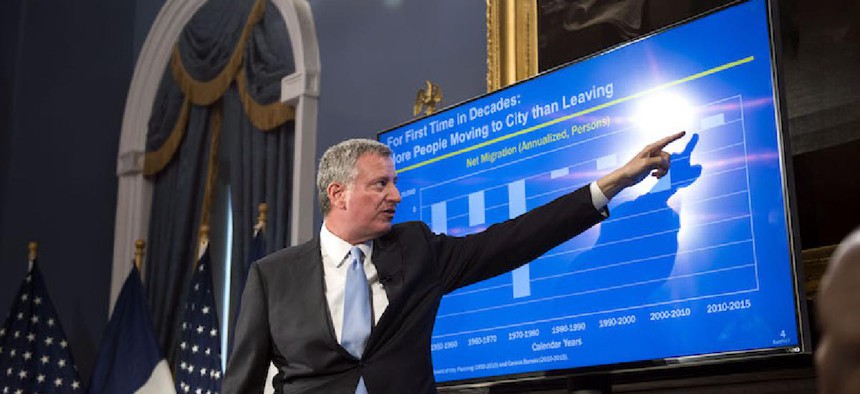This was supposed to be the end of the budget dance. A time when the city’s administration would cut funding for needed programs just to make the council negotiate for restorations was supposed to be behind us. Instead, Mayor Bill de Blasio has started a waltz right over the meals vulnerable New Yorkers need to survive.
Nearly 1.4 million New York City residents rely on a food pantry or soup kitchen for help during tough times. De Blasio’s executive budget cuts $1.8 million from one of the most vital supports for struggling New Yorkers – the Emergency Food Assistance Program – effectively sending funding back to 2012 levels. A lot has changed since 2012 – most notably, broad cuts to the Supplemental Nutrition Assistance Program that have resulted in the ongoing loss of 5.3 million meals every month for low-income New Yorkers. This past September, half of our city’s food pantries and soup kitchens ran out of food. The answer in our mayor’s budget is to provide even less.
A budget translates priorities into dollars and cents. While 16 percent of New Yorkers rely on a food pantry or soup kitchen for help, New York City spends less than 0.01 percent of its budget for food intended for the poorest New Yorkers. The Emergency Food Assistance Program, one of our most effective programs for ensuring that every New Yorker has reliable access to nutritious food, is at risk of severe underfunding – unless our city’s leaders act quickly to change it.
Emergency food is our last line of defense against hunger, and the need for it in our city remains high. When SNAP benefits were cut in November 2013, 42 percent of recipients in New York City were already turning to food pantries and soup kitchens. Once the SNAP cuts went into effect, 85 percent of soup kitchens and food pantries in Food Bank For New York City’s charity network saw more visitors than in the direct aftermath of Superstorm Sandy.
Fast-forward to today, and food pantries and soup kitchens are still struggling to keep up with increased demand. Last September, not only did half of food pantries and soup kitchens experience shortages, 45 percent of food pantries reported having to reduce the number of meals provided in their pantry bags. Our city’s food pantries, half of which operate on an annual budget of less than $25,000, are only able to provide an average of 5.8 meals in a pantry bag, far short of New York state’s current standard of 9.
The City Council, recognizing how much unmet need exists in communities across the five boroughs, has offered a counter-proposal to the de Blasio administration’s cut: an increase of funding to $22 million, and an opportunity to provide more than 14 million meals above what the administration’s funding would supply.
New Yorkers turn to emergency food programs when they have no other options. Waiting on those lines are working people, seniors, mothers and fathers of children who still need food when the cupboards at home are bare. By the time they reach a food pantry or soup kitchen, they have already sacrificed food to keep the roof over their heads. By the time they reach a food pantry or soup kitchen, they have already sacrificed the most healthful food for the cheapest just to keep bellies full. By the time they reach a food pantry or soup kitchen, there are no other sacrifices they can make. Without adequate nutritious food, children cannot learn, adults cannot meet their full productive potential, and seniors cannot maintain their health.
Dancing around this unmet need trivializes one of the most brutal manifestations of income inequality in our city. The Emergency Food Assistance Program is a resource New Yorkers need for survival through hard times; using it as a bargaining chip does not respect or reflect its true value.
We are calling on Mayor de Blasio and the City Council to quit dancing, and seize the opportunity before them right now to level the nutritional playing field for all New Yorkers by increasing the program’s funding to $22 million.
Margarette Purvis is the president and CEO of the Food Bank For New York City.
NEXT STORY: A mixed budget message


